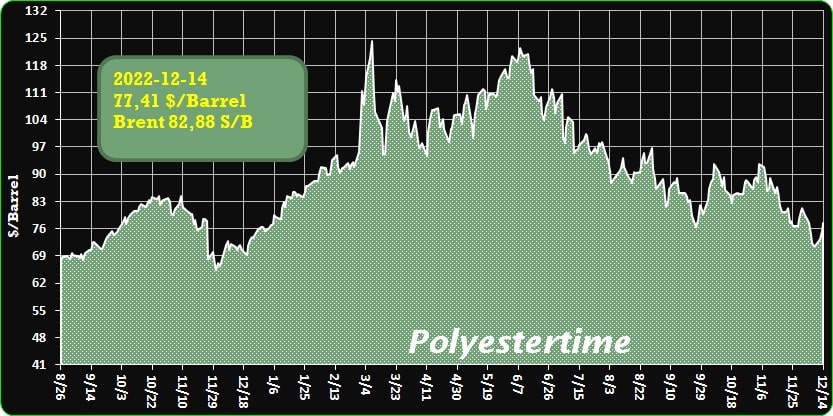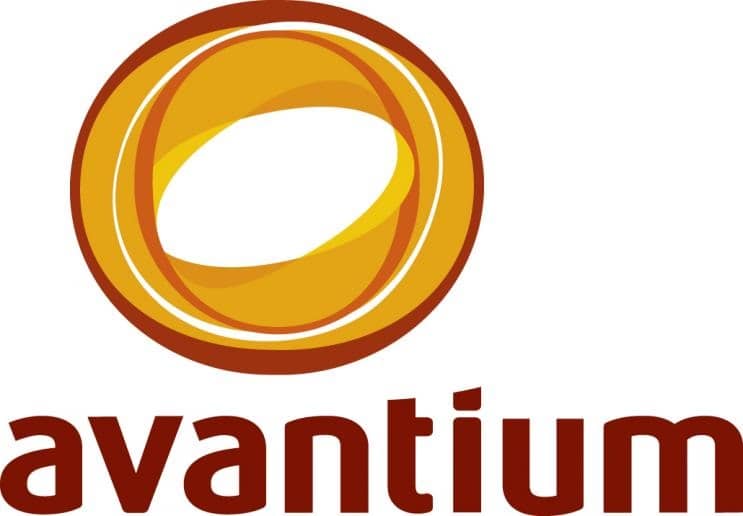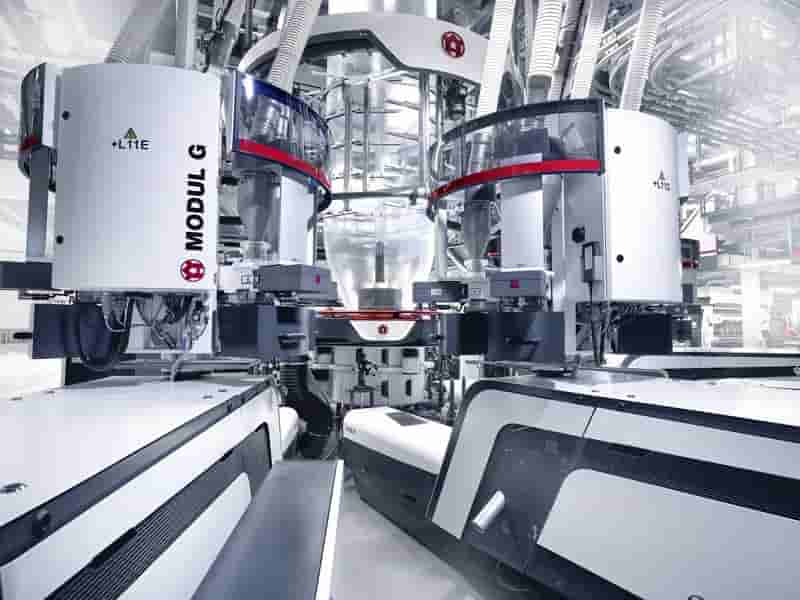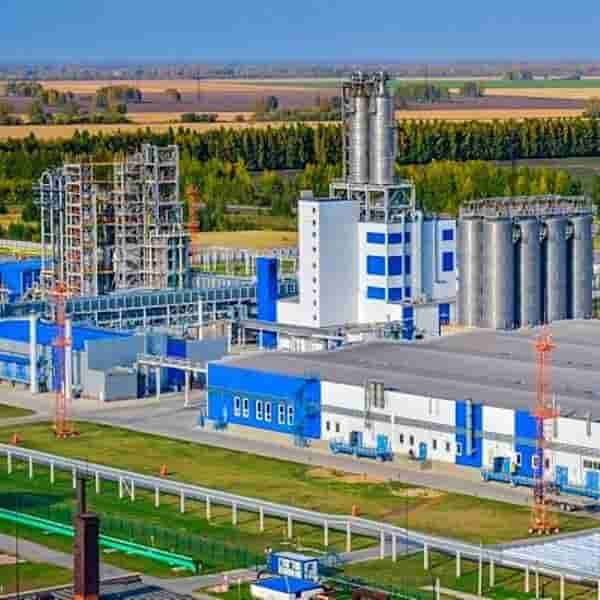PEF-industrial-fibres – Film – PE – PP 14-12-2022 - Arhive
PEF-industrial-fibres – Film – PE – PP
Crude Oil Prices Trend

-Avantium and Monosuisse sign offtake agreement on PEF for industrial fibres
Avantium N.V., a leading technology company in renewable chemistry, and Monosuisse AG, a leading producer of a wide variety of synthetic monofilaments for industrial use, have signed an offtake agreement giving Monosuisse access to PEF (polyethylene furanoate) made from FDCA (furandicarboxylic acid) to be produced in Avantium’s planned FDCA Flagship Plant.
This world’s first commercial facility for the manufacture of FDCA from plant-based sugars is currently under construction in Delfzijl, the Netherlands, and Avantium expects to start production in 2024. Monosuisse will purchase PEF for the use in monofilament yarns, which can be used in a broad range of industrial applications.
Avantium’s PEF is a 100% plant-based and fully recyclable polymer with a wide range of applications such as packaging, film and textiles. In addition to packaging materials made from PEF, Avantium is increasing its focus on the development of PEF for fibres and yarns.
For many years, Monosuisse has been committed to sustainability in all areas of production. The company focuses on reduction of waste, the use of environmentally friendly raw materials, as well as reducing its carbon footprint. Sustainability is a criterion for the choice of its suppliers. PEF-industrial-fibres – Film – PE – PP
To this end, Monosuisse and Avantium have joined efforts in the development of PEF-based monofilament yarns, which resulted in a positive evaluation of the performance of PEF-based monofilaments. Monosuisse has now signed an offtake agreement and will further develop sustainable and highperformance PEF-based monofilament yarns for commercial introduction when the Flagship Plant is operational.
“We are impressed by the potential and performance of PEF in monofilament yarns. Beyond its sustainable advantages, such as being 100% plant-based and fully recyclable, PEF is spinnable in the existing spinning lines without any hurdle or further investment”, states Philipp Kohler, Chief Technology Officer at Monosuisse.

-Vehicles of the future open door for advanced rubber technologies
Electric vehicles are continuing to drive advanced R&D across all areas of the elastomers/rubber industry
The accelerating pace of developments in the market for electric vehicles (EVs) is continuing to drive technology developments among machinery-makers, materials suppliers and processors within the elastomers/rubber industry.
Feedback from major players in this space points to significant progress being made at all stages of the development process, from R&D to commercialisation as well as planning for further advances to meet the requirements of the automotive industry over the next five years and beyond. PEF-industrial-fibres – Film – PE – PP
According to Klaus Kammerer, technical service & development consultant at the Celanese Mobility & Materials business, “before this decade is over, more than two out of three cars produced in the world will be either fully battery-powered or with a hybrid propulsion system.”
Tier suppliers, he adds, are “meanwhile, scrambling to maintain their business supporting ICE-powered vehicles while also setting themselves up for the electric future. The rapid pace of change puts pressure on automotive-systems suppliers to find materials that meet new CTQs [critical technical qualifications] for EVs, and ideally for both ICE and electrically powered vehicles.”
Water/glycol remains the most common cooling technology for batteries and because it is not too aggressive, non-oil-resistant sealing materials like EPDM or silicone rubber (liquid (LSR) or high consistency rubber (HCR) can be used as seals for water/glycol systems.
However, an increasing number of cooling systems in EVs have not just water/glycol but also include oils for lubrication – for these, neither EPDM nor LSR work well.
This claims Kammerer, is the ‘sweet spot’ for Vamac ethylene acrylic elastomer (AEM), which due to its chemical composition offers a “unique combination of low temperature flexibility and resistance to heat, oil, water/glycol, acids, and bases as well as outstanding compression-set and compressive stress-relaxation resistance.”
For electric and hybrid vehicles, “there is significant interest in specifying [AEM] as a gasket material for high voltage connectors that are injection moulded from non-halogenated flame-retardant polymers, as well as for critical components of EVs such as traction motor, battery, and others,” concluded Kammerer.
Today, the battery is the current solution to switch between petrol and electric power, tomorrow it will be the fuel-cell powered with hydrogen, believes Thorsten Just, global sales and marketing director at REP International. The levels of investment indicate that this fuel cell technology is the next solution – about Ä9 billion by 2030 for Germany and Ä7 billion by 2030 for France. PEF-industrial-fibres – Film – PE – PP
In this domain, elastomer/rubber has an important role to play to insulate the devices: battery boxes are insulated by a gasket, while fuel cells need high-precision gaskets to insulate the bipolar plates (BPP) in the stack devices.
REP machines are able to produce the gasket for both technologies, offering adaptability to provide solutions to inject elastomer/rubber material on a metal support to insulate the battery box, from small- to huge-sized applications, such as for truck cells (1.5 x 2,1m).
For smaller applications, these electric machines can be used to reduce the overall energy consumption to produce the stacks reduced by 40% compared to other machines, continues Just.
For fuel cells, the challenge of tomorrow is the switch of manufacturing scale, from laboratory to mass factory. Here, REP has been working for several years to develop solutions to produce injected gaskets on the bipolar plates – on one face or two faces simultaneously.
“The efficiency and stability of the fuel cell is ensured by different components and the bipolar plates represent 80% of the fuel cell market,” said Just. “The gasket between each cell is, therefore, also important, in particular in term of safety.”
Due to the adaptability of the design, these machines can inject all the compounds – silicone, FKM, etc – and gasket material on the bipolar plates on single or double face, within fully automated systems that offer a springboard for increased productivity, repeatability and, therefore, production capacity.
“The injection moulding machines, cold runner blocks and moulds are delivered as turnkey solutions for the moulding of gaskets on the bipolar plates, with precise thickness of 0.2 mm to ensure the dimension of final stack without deviation of the total high,” explains Just.
The next step for the development of fuel cells will be centred on power efficiency and cost-reduction to produce the complete stack, according to the REP director: ”Together with increased durability – due to better cooling and new materials for gaskets – these technologies will significantly increase production efficiency in this important domain.”
According to Dirk Lambrecht, CEO of Datwyler, the Swiss group is strengthening its patent position in the area of electroactive polymers, including in a unique stacked design that enables completely new applications in the car of the future. Target areas range from thermal management in electric vehicle batteries to haptic feedback and ‘morphing’ surfaces in human-machine interface applications.
The strategy has seen the group obtain several patents with the acquisition of the Swiss start-up CTsystems as well as work with the spin-off from the Swiss Federal Laboratories for Materials Science and Technology (EMPA) since 2018.
Basically, electroactive polymers convert electrical energy into sensitive and versatile mechanical motion through elastic deformation. They can be used, for instance, in actuators and sensors to control switches, locks, valves and to operate pumps.
Within electric vehicles, they can be used for thermal management of batteries, as well as actuation of mechanical components, dashboard vents or valves for pneumatic massage seats for drivers and passengers. PEF-industrial-fibres – Film – PE – PP
Further examples include haptic feedback on displays and on the steering wheel, or control elements morphing out of the plain surface and becoming active when approached.
The patented solution makes possible for the first time to produce stack actuators on an industrial scale, opening the door for the introduction of advanced alternatives to conventional actuator technologies in a range of application areas.
Advantages of the new technology include: lower energy consumption, fewer mechanical parts, low weight and volume, a robust and durable design, and noise-free operation with sensor and haptic feedback functionality.
Datwyler is currently working to build the proprietary, highly automated production line at its existing Swiss plant. Lab samples, it reported, are already available and delivery of the first industrial prototypes is planned for early 2024.
Discussions with existing and potential customers, as well as initial development projects, show that both vehicle manufacturers themselves and suppliers of technical systems and interiors are very interested in the new possibilities offered by stacked electroactive polymers,” said Lambrecht.
Transition temperature
For Dr. Thomas Stratton, tire and compound application leader at Synthos, a crucial and accelerating trend with the electrification of the automotive industry is the use of solution styrene-butadiene rubber (SSBR) grades with a low glass transition temperature (Tg) in passenger car tire tread compounds.
As well as demand for improved rolling resistance and wear resistance, the increased weight, instant torque and driving-range limitations of EVs have given performance improvements a new urgency, he notes. PEF-industrial-fibres – Film – PE – PP
“Tg strongly influences tread compound performance properties,” says Stratton. “Formulations incorporating low-Tg SSBR grades generally provide low rolling resistance and good wear properties, as long as tensile and mechanical strength can be maintained.”
These materials, he adds, will, therefore, play a major role in the navigation of tire performance to these new shores for both passenger and eventually commercial vehicles: allowing tire developers much more freedom to use performance-enhancing additives, lower levels of butadiene rubber and even full SSBR compounds.
“Wet grip – generally associated with a higher Tg – can be compensated for by adding resins at levels previously unattainable,” Stratton continued. “A low-Tg base polymer allows for compound recipes to support a better balance of lower rolling resistance, better wet grip and abrasion resistance.”
Synthos newest low-Tg SSBR functionalised and non-functionalised commercial grades for carbon black and silica tread compounds provide low rolling resistance, “excellent” winter properties, very good wear and dynamic stiffness as well as non-functionalised low Tg SSBRs offering low rolling resistance, low heat build-up and “excellent” wear.
The company’s proprietary functionalisation technology is said to provide better wet-grip and lower rolling resistance for ultra-high performance tires at a relatively low Tg, with synthetic rubber grades also available as bio/circular-attributed materials under ISCC Plus certification.
Stratton went on to report that Synthos will be introducing several new low Tg SSBR products to the market from March 2023, that focus on novel functionalisation technology. These, he said, will provide “further benefits in rolling resistance performance, while balancing the processability of compounds and mechanical characteristics.”
Meanwhile, adoption of low Tg SSBR grades is also expected to increase significantly in truck and bus tire silica tread compounds over the next few years, according to the Synthos expert. PEF-industrial-fibres – Film – PE – PP
Important role
At Wacker Silicones, Dr. Martin Bortenschlager, director of business team engineering silicones and responsible for Europe, Middle and Near East, Africa and Latin America, says the unique properties of silicone elastomers have an important role to play in electromobility and, it follows, in sustainable transportation for the future.
“Silicone elastomers do more than just make electric vehicles more reliable – they make them last longer, too. They also reduce the need for repairs and the replacement of parts, which helps prevent waste. And in addition to all that, they are easy to process and support automated mass production.”
In EVs, for example, electrical lines have to be connected and disconnected for assembly and maintenance work. The fastest way to do this is to use electrical connectors. These frequently have a silicone seal to prevent moisture, dust or road salt from penetrating the housing.
Seal designs include single wire and radial seals as well as multi-cavity seals. For applications like these, Wacker offers liquid and solid silicone rubber products that exude silicone fluid after curing. Products with intrinsically dry, but lubricating surfaces are available as well and especially suitable for e-mobility applications.
Elastosil LR 38xx is an oil-bleeding liquid silicone rubber (LSR) that reliably seals connectors. The LSR is injection moulded and exudes a silicone fluid shortly after curing which forms a lubricating layer that facilitates the assembly of the connector in the desired socket. PEF-industrial-fibres – Film – PE – PP
The product remains flexible at low temperatures, withstands exceptional heat and is usable within a range between -55°C and +210°C. The volatile content is extremely low, facilitated by Wacker’s advanced processing technologies, says Bortenschlager.
Elsewhere in the silicones arena, Dow has recently introduced a liquid silicone rubber (LSR) with tailored adhesion properties and designed specifically for automotive applications.
The LSR adheres to PBT and PA66 substrates and, so, can be used in two-component injection mouldings for connector seals within battery electric vehicles, explains Jason Treharne, Dow Silicones EMEA regional marketing manager, industrial, electrical and mobility silicone elastomers.
A special feature is that the product offers a 12-month shelf-life which, according to Treharne, is “actually quite long for a selective adhesion LSR. This gives the fabricator or the tier one more flexibility to react to peaks and troughs in demand as well as bringing benefits in terms of reduced scrap and improved material inventory handling. “Bonding, he added, is “robust and instant and there is no need for further post-curing to build up the adhesion.”
Dow has also introduced HCR silicone-based custom compounds for electric vehicle cable installations: the materials are designed to meet high-performance requirements for distributing power between battery packs and motors within EVs, hybrids or plugins.

-More Automation Comes to Blown Film Processing
New system for cuts in half the time to move from one product format to another.
At K 2022 in Dusseldorf, Windmoeller & Hoelscher debuted its latest offering to automate the blown film process and simplify changeovers. Throughout the week-long October show, W&H gave live demonstrations of the technology, called Easy2 Change, on a multi-layer Varex 2 blown film line. PEF-industrial-fibres – Film – PE – PP
Easy2 Change is said to supports the machine operator during every necessary step of a product change-over. An intuitive HMI gives the operator full transparency and control throughout the change-over. Innovative technology detects the bubble stability and checks the frost line to ensuring reproducible high film quality.
The software guides operators through the process to prevent errors while guiding them to pending tasks, W&H says. All components are automatically set, including W&H’s fully automated Arctis air ring.
Compared to an experienced operator, the number of necessary clicks for a product change is reduced by more than 70% and the time needed is cut by over half, says W&H.
More Automation Comes to Blown Film Processing
New system for cuts in half the time to move from one product format to another.
At K 2022 in Dusseldorf, Windmoeller & Hoelscher debuted its latest offering to automate the blown film process and simplify changeovers. Throughout the week-long October show, W&H gave live demonstrations of the technology, called Easy2 Change, on a multi-layer Varex 2 blown film line.
Easy2 Change is said to supports the machine operator during every necessary step of a product change-over. An intuitive HMI gives the operator full transparency and control throughout the change-over. Innovative technology detects the bubble stability and checks the frost line to ensuring reproducible high film quality.
The software guides operators through the process to prevent errors while guiding them to pending tasks, W&H says. All components are automatically set, including W&H’s fully automated Arctis air ring.
Compared to an experienced operator, the number of necessary clicks for a product change is reduced by more than 70% and the time needed is cut by over half, says W&H.

-How Bunting’s high-frequency eddy current separator helps mitigate contamination in plastics recycling
A plastics recycler turned to Bunting to solve a costly dilemma. The company shreds millions of plastic bottles every day to make PET (polyethylene terephthalate) flake. The clean flake will ultimately be sold to injection moulding companies. However, too much metal contamination was found in their feed material and metal detectors were rejecting more than 2,500 pounds of PET flake per day. That’s anywhere from $200 to $500 per ton per day going to waste. PEF-industrial-fibres – Film – PE – PP
The plastics recycler determined adding Bunting’s high-frequency eddy current separator (HFEC) would remove shredded aluminum and other contaminants before it reaches the metal detector. The HFEC utilizes magnetic forces to repel non-ferrous metals and increase separation from non-conductive materials. This helps plastics recyclers achieve the cleanest plastic flake possible.
Bunting’s HFEC uses a magnetic rotor design that provides a strong gauss level. This enhances the eddy current field intensity and results in greater separation of small metallic particles from plastics. The HFEC is available in three widths: one metre, 1.5 metres, and two metres, allowing for the optimization of the unit to the flow rate and product mix.

-November contract price of paraxylene in Europe decreased by EUR40 per ton
The November contract price of paraxylene in Europe is down EUR40 a tonne from October, ICIS said.
Some transactions were agreed at EUR1,210 per tonne and EUR1,250 per tonne, FD NWE (northwest Europe), so the average price level was agreed at EUR1,230 per tonne.
According to market sources, the decline in prices was due to lower costs for mixed xylenes raw materials in October and a decrease in the level of demand in the processing and sales segment. The decline in paraxylene prices in Asia has also affected the debate.
Earlier it was reported that the participants in the negotiation process to agree on the December contract prices of paraxylene in Asia could not reach an agreement for this month. Sellers’ offers were at USD1,000-1,070 per tonne, CFR (cost and freight) Asia versus buyers’ offers at USD800-850 per tonne, CFR Asia. This is the twelfth time this year that no agreement has been reached. PEF-industrial-fibres – Film – PE – PP
According to the ScanPlast review, the estimated consumption of PET in September of this year increased by 32% compared to a year earlier and amounted to 78.81 thousand tons. According to the results of the first nine months of this year, 621.61 thousand tons of PET were processed in Russia, which is 1% more than the same indicator in 2021.

-Gazprom Neft plans to produce polyethylene and polypropylene at the Omsk Refinery
Gazprom Neft plans to launch petrochemical production at the Omsk Refinery, which may include pyrolysis with the production of polyethylene and polypropylene, Rupec reports, citing Oleg Vedernikov, Director of Gazprom Neft’s Oil and Gas Refining Directorate.
“We continue to study the possibility of developing the Omsk Refinery in the petrochemical sector. This will provide a new level of production flexibility by involving the entire basket of intermediate and by-products. The goal of all oil refining is to produce the maximum amount of those products that are more expensive than oil,” he said.
“Preliminarily, we plan that the potential production will include pyrolysis with the production of polyethylene and polypropylene,” the top manager added.
Earlier it was reported that Gazprom Neft, after the completion of the modernization of its refineries in Russia in 2025, will develop them in the direction of petrochemistry. Gazprom Neft is also considering a number of technology partners for the development of the Omsk Refinery in the petrochemical sector. PEF-industrial-fibres – Film – PE – PP
For example, in 2023 Gazprom Neft plans to launch the first catalyst production line for oil refining with a capacity of 6,000 tonnes of hydroprocess catalysts per year, which are not currently produced in Russia. Gazprom Neft began construction of a refinery for the production of catalysts in Omsk in October 2019. The capacity of the plant will be 21 thousand tons per year of catalysts, including 15 thousand tons per year of catalysts for catalytic cracking, 4 thousand tons per year of hydrotreating catalysts and 2 thousand tons per year of hydrocracking catalysts.
Earlier it was reported that Gazprom Neft and Shell on the basis of the joint venture Gydan Energy planned to form a new large search cluster in the Arctic. It was assumed that commercial production at the project could begin in 2028, the projected production volume of the project could reach 19.9 million tons of oil in 2034.
Gazprom Neft (headquartered in St. Petersburg, part of Gazprom, which owns 95.68% of the shares) is one of the largest Russian oil companies.

-Indorama Ventures Reports Resilient YTD Earnings As Management Leverages Its Unique Global Model Amid Macroeconomic Challenges
Indorama Ventures Public Company Limited (IVL), a global sustainable chemical producer, today reported a resilient year-to-date performance as management leveraged the company’s unique global integrated model to drive earnings through a challenging macroeconomic environment.
IVL posted Core EBITDA of US$606 million in 3Q22, a 39% increase YoY and a decline of 20% QoQ as the strong tailwinds that drove record earnings into 2022 began to normalize in the third quarter. Management have redoubled efforts through the year to mitigate the impact of unprecedented global economic fluctuations triggered by instability in Europe and continued lockdowns in China. PEF-industrial-fibres – Film – PE – PP
Strategic acquisitions, including Oxiteno, are bolstering IVL’s increasingly diverse geographic footprint and product portfolio, supporting earnings through volatile economic conditions. Revenue declined 10% QoQ in 3Q and grew 27% YoY as Combined PET, the largest business segment, saw steady volumes through the year, and new portfolio additions performed strongly, such as surfactants in the Integrated Oxides and Derivatives segment. With more than 70% of IVL’s platform catering to consumer daily necessities, demand remains stable.
Mr. D K Agarwal, CEO of Indorama Ventures, said, “We are pleased with our performance across the business cycle. Our management is working hard to extract the advantages that we enjoy in terms of geographic leadership, product diversity, and an unmatched customer base of global household brands. Together with our habitual lens on cost management, these actions will help us to weather the economic challenges and continue to focus on our long-term potential.”
Combined PET (CPET) segment achieved YTD Core EBITDA of US$1,192 million, an increase of 42% YoY. Core EBITDA in 3Q22 rose 27% YoY to US$327 million, and declined 24% QoQ, as business remained steady across operations apart from in Europe where peak energy prices continue to put pressure on demand and margins.
Integrated Oxides and Derivatives (IOD) segment posted YTD Core EBITDA of US$604 million, a rise of 137% YoY, due to integration benefits from the Oxiteno acquisition in April and robust demand for surfactants products. The segment achieved 3Q Core EBITDA of US$219 million, an increase of 82% YoY, and a decline of 16% QoQ as margins weakened in the Integrated Intermediates portfolio amid overcapacity and the ongoing pandemic lockdown in China.
Fibers segment posted YTD Core EBITDA of $189 million, a rise of 2% YoY. 3Q Core EBITDA increased 2% YoY, and decreased of 11% QoQ, to US$49 million. The Lifestyle fibers business continues to be impacted by the lockdown in China, while management in the Hygiene and Mobility verticals in Europe are effectively managing high energy costs.

PEF-industrial-fibres – Film – PE – PP
